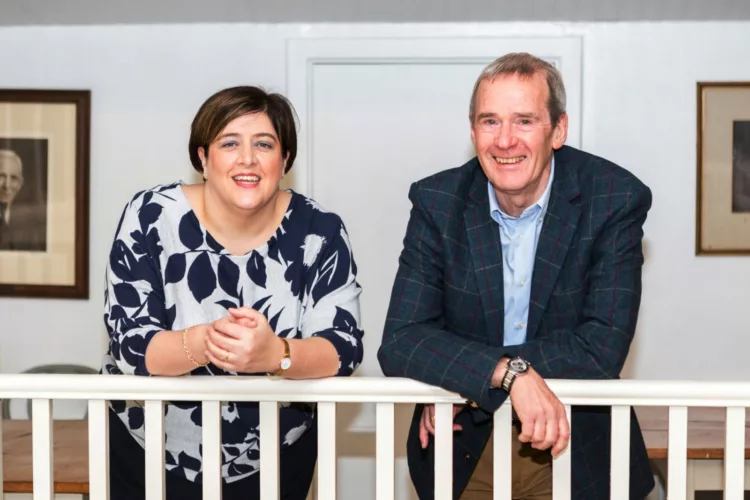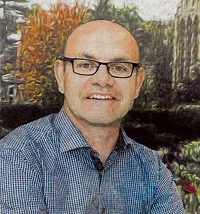
Ipswich Building Society Paul Winter, Chief Executive
Supported with Strategic HR Consultancy

Strategic HR Consultancy Case Study – Last updated January 2017
Ipswich Building Society – Strategic Change Programme
Ipswich Building Society has achieved successful growth during the tenure of Chief Executive Paul Winter. Their heritage as a mutual business naturally drove a family style culture with high employee and member satisfaction rates. However, in 2015 Paul could see that the market was becoming increasingly more competitive and that the Society would need to implement strategic change to ensure future success and counteract the effects of new competition.
Paul recognised the need for complete consistency between their business aims and the culture and behaviours of their people to achieve future success. A firm believer that the strength of any business is within the talent and motivation of its people, Paul decided a formal review of the people strategy and ensuring its alignment to their business aims was essential.
Our work with Ipswich Building Society – The Challenge
When we were approached by Paul he was clear in his objective – he needed someone to come in and be the all-seeing, panoramic eye of the business and fix the gaps. There was much that was good about this well-established, customer focused business but somewhere, somehow, the company values and purpose were less prevalent, with an employee focus on the wrong areas. The Society was founded on strong mutual principles which was a great platform to build on.
What we brought as a strategic HR partner
• Someone to take a fresh look at your business with significant experience of the type of change needed
• We took a look at the whole organisation (people, roles, assets, systems)
• Fresh conversations and we asked all the pertinent questions
• No agenda and no element of self-preservation in the process
• Access to all areas of the business and all staff
• Effective focussed project management
• Time and capacity
Diagnostic Phase
• Analysed the organisation structure and its clarity of purpose
• Interviewed a cross-section of managers and colleagues
• Analysed the employee survey results
• Analysed systems and processes
“HR Strategy Planning.”
“Very responsive to the needs of the organisation. Prompt response to all queries . Tailored solutions rather than just ‘off the shelf’.” Read the full review
Intervention Phase
With the diagnosis complete, we met with the Executive Team for a strategy day and communicated the findings and the actions to be taken. This is a vital step in establishing understanding and commitment to strategic change.
Paul explained “I was keen that the review of our people strategy was collaborative and that all employees had the opportunity to be heard. Using an independent consultant enabled an open process devoid of any agenda and they were able to challenge the Executive team robustly. The strategy day allowed the Executive team to understand the key messages and to start to formulate a new approach using the experience and insight from our consultant”.
Implementation Phase
- Created a new people structure – to ensure that the right people were performing the right roles, in the right way, in the right places at the right times across the business.
- Aligned recruitment processes – we created a framework for the Society that enabled the recruiter to test for the behaviours as well as the knowledge and skill required.
- Introduced new appraisal and performance management systems which demonstrated clear evidence that employees were being supported to achieve their full potential.
- Published key documents for open and universal circulation so everyone, for clarity of roles and expectations were.
- Introduced technology that lightened the load – our expertise of the market place meant that we could source those systems that performed all of the required functions and offered best value.
- Internal communication – to achieve employee engagement, accountability, time efficiencies and introduce a rolling process of improvement, evaluation and change, communicating expectations.
- Created clear promotion and talent management platforms – the creation of the competency framework made it transparent for colleagues seeking promotion to understand more clearly what they needed to demonstrate consistently to show their readiness for advancement.
- Aligned formal training – we recommended that parameters be put in place to ensure that any training supported benefitted them as individuals and met the needs of the business.
Things to avoid when making changes in your business:
• Negativity…..we can’t, we tried that once, no one will do it etc.
• Being fearful of change…..
• Using software to answer your strategic problem
• Process for process sake
• Being boring or poor communications
• Not agreeing the spec and budget up front
• Not having / sharing a vision about what the future will look like post change
We made a difference by:
We made a difference in a number of ways but the key outcome was that Ipswich Building Society became a competency based organisation with a focus on personal employee development that was congruent with its aims as mutual institution.
Paul Winter could have rested on his laurels, as he approached retirement and with a fair few years at IBS behind him. But he didn’t. Demonstrating true insight, determination and leadership, Paul went for it, ensuring a legacy to be proud of and believing in the team until the end of his reign. Getting the best out of your people across the organisation is the key to success. It is hard but it is not impossible.
Please read more about how we can help and advice you through strategic change with our Strategic HR Consultancy Service. We would be delighted to help you with your HR.



